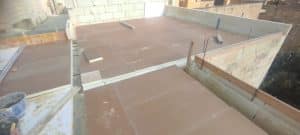Underfloor heating is gaining popularity in Malta, especially with tiled floors being a common choice for homes here. But many homeowners wonder: how much energy consumption does underfloor heating on tiled floors really involve? In this post, we’ll explore everything you need to know about the energy use of these systems, the factors that influence it, and how you can optimize your home heating for comfort and savings.
If you’re interested in installing underfloor heating or want to improve your current system, you can contact us anytime at Kibitec for expert guidance and services.
What Is Energy Consumption Underfloor Heating Tiled Floors?| Energy Consumption Underfloor Heating Tiled Floors
At its core, energy consumption underfloor heating tiled floors refers to the amount of electrical or thermal energy used by an underfloor heating system installed beneath tiled flooring. Underfloor heating works by warming the floor surface evenly, which then radiates heat upwards to warm the room.
Tiled floors are excellent conductors of heat, which means the heat from the system transfers efficiently into the room. However, this efficiency can be a double-edged sword—while it reduces heat-up time and energy waste, tiled floors can also lose heat quickly if the underlying insulation is poor.
The total energy consumed depends on several factors such as the size of the heated area, the insulation quality, the type of system (electric or water-based), and the thermostat settings. Understanding these elements is key to managing your energy use and costs effectively.
1. How Tiles Affect Energy Consumption Underfloor Heating| Energy Consumption Underfloor Heating Tiled Floors
Tiles, whether ceramic, porcelain, or natural stone, are commonly used in Maltese homes for their durability and aesthetic appeal. When combined with underfloor heating, tiles can either enhance or challenge energy efficiency.
Because tiles have high thermal conductivity, they absorb and distribute heat quickly from the underfloor system. This means the floor surface warms up faster compared to carpets or wooden floors, requiring less energy to reach a comfortable temperature.
However, the downside is tiles also cool down quickly when the heating is off, potentially causing the system to cycle on more frequently to maintain warmth. This makes the role of good insulation beneath the tiled floor even more important.
For Maltese homes, where winter months are relatively short and mild, tiled floors with underfloor heating offer excellent comfort without excessive energy consumption—especially if paired with smart thermostats and good insulation.
2. Comparing Energy Consumption: Electric vs Water-Based Systems on Tiled Floors| Energy Consumption Underfloor Heating Tiled Floors
There are two primary types of underfloor heating systems that impact energy consumption differently on tiled floors:
Electric systems consist of heating cables or mats installed beneath the tiles. These systems are easier to install and ideal for smaller spaces but can consume more electricity depending on usage.
Water-based (hydronic) systems circulate warm water through pipes under the floor. These systems are more complex and expensive upfront but are generally more energy-efficient, especially for whole-house heating.
In Malta, electric systems are popular for tiled bathrooms, kitchens, and smaller rooms, where quick heat-up times and targeted heating reduce energy consumption. Water-based systems work well for larger homes with multiple rooms and better long-term efficiency.
While electric underfloor heating might consume around 80 to 100 watts per square meter, water-based systems usually use less, especially when connected to energy-efficient boilers or heat pumps.
3. Factors Influencing Energy Consumption Underfloor Heating Tiled Floors in Malta| Energy Consumption Underfloor Heating Tiled Floors
Several key factors impact how much energy your underfloor heating system uses beneath tiled floors:
Insulation: Proper insulation under the tiles prevents heat loss to the ground and drastically reduces energy use.
Thermostat Settings: Lowering the thermostat by just a few degrees can significantly cut electricity bills.
Floor Area Heated: Larger areas require more energy, but zoning your heating allows control over individual rooms.
Climate: Malta’s mild winters reduce heating demand compared to colder countries.
System Efficiency: Modern systems with programmable thermostats and timers optimize usage and save energy.
By addressing these factors, Maltese homeowners can enjoy warm tiled floors without worrying about soaring energy costs.
4. Average Energy Costs for Underfloor Heating on Tiled Floors in Malta| Energy Consumption Underfloor Heating Tiled Floors
Understanding potential costs helps homeowners budget properly for underfloor heating.
Electric systems generally consume between 80 to 100 watts per square meter. If you heat a 20 m² tiled bathroom for 4 hours daily during winter months, your energy consumption could be roughly:
80 watts × 20 m² × 4 hours = 6,400 watt-hours or 6.4 kWh per day
Assuming an average electricity cost in Malta of about €0.20 per kWh, this equates to:
6.4 kWh × €0.20 = €1.28 per day
Over a 3-month winter period, that’s around €115, which many homeowners find reasonable for the comfort provided.
Water-based systems’ costs vary based on fuel type (natural gas, electric boiler, or heat pump) but often offer savings through lower operating temperatures and better efficiency.
Why Choose Kibitec for Your Underfloor Heating Needs?| Energy Consumption Underfloor Heating Tiled Floors
If you want to enjoy efficient energy consumption underfloor heating tiled floors in your Maltese home, Kibitec offers expert advice, high-quality materials, and professional installation tailored to your needs.
Contact us today at https://kibitec.com/contact-us/ to learn more or request a free quote.
5. How to Reduce Energy Consumption with Underfloor Heating on Tiled Floors| Energy Consumption Underfloor Heating Tiled Floors
Reducing energy consumption underfloor heating tiled floors isn’t just about choosing the right system — it’s also about how you manage and maintain it.
Use Programmable Thermostats: These allow you to set heating schedules that match your lifestyle, preventing energy waste when rooms are unoccupied.
Zone Your Heating: By dividing your home into heating zones, you can control which areas get warmed, avoiding unnecessary heating.
Improve Insulation: Proper insulation beneath the tiled floors and around your home reduces heat loss and lowers energy needs.
Keep Floors Clean: Dust and dirt can affect heat transfer slightly, so maintaining clean tiled floors helps efficiency.
Regular System Checks: Even though underfloor heating requires low maintenance, periodic professional checks ensure your system operates optimally.
Applying these tips can significantly lower your electricity bills while keeping your home cozy during Malta’s cooler months.
6. The Impact of Maltese Climate on Energy Consumption for Underfloor Heating| Energy Consumption Underfloor Heating Tiled Floors
Malta’s Mediterranean climate means winters are relatively mild, which impacts how much energy underfloor heating consumes.
Unlike colder regions where heating runs for months on end, Maltese homes typically only need heating from December through February. This shorter heating season naturally limits energy consumption.
Additionally, the moderate temperatures mean you don’t need to keep your thermostat as high as in colder countries, further reducing energy use.
In summer, tiled floors stay cool, helping with natural ventilation and lowering the need for air conditioning—another energy-saving benefit for homes with tiled flooring and underfloor heating.
7. Is Underfloor Heating Cost-Effective on Tiled Floors in Malta?| Energy Consumption Underfloor Heating Tiled Floors
Many Maltese homeowners ask if the investment in underfloor heating is worth the energy cost.
Considering installation prices ranging from €50 to €100 per square meter (depending on system type and floor surface), plus the running costs we discussed, the answer is a confident yes.
The even warmth, comfort, and improved home value justify the initial expenditure. Plus, energy-efficient systems and smart controls help keep ongoing costs manageable.
Electric underfloor heating suits smaller rooms or renovations, while water-based systems offer better efficiency for whole-house solutions.
The Importance of Thermostat Placement for Energy Efficiency
Proper thermostat placement is crucial to controlling energy consumption underfloor heating tiled floors effectively. Placing the thermostat away from direct sunlight, drafts, or heat sources ensures accurate temperature readings, preventing the system from overheating or running unnecessarily. For Maltese homes, this means more consistent warmth and reduced energy waste, ultimately lowering electricity costs.
Seasonal Adjustments to Optimize Energy Use
Adjusting your underfloor heating settings seasonally can have a significant impact on energy consumption underfloor heating tiled floors. In Malta, where winters are mild, reducing heating during transitional months like autumn and spring helps avoid unnecessary energy use. Using timers or smart thermostats to lower temperatures during warmer days while maintaining comfort during colder nights is an effective strategy.
Integrating Underfloor Heating with Renewable Energy
Combining underfloor heating with renewable energy sources, such as solar panels, can further reduce energy consumption underfloor heating tiled floors. Malta’s sunny climate makes solar energy an excellent option to power electric underfloor heating systems sustainably. This integration not only lowers electricity bills but also supports environmental goals, making your home greener and more cost-efficient.
How Floor Coverings Influence Heat Retention and Consumption
While tiled floors conduct heat efficiently, the choice of floor covering on top can affect energy consumption underfloor heating tiled floors. Thick rugs or carpets can act as insulators, slowing heat transfer and forcing the system to use more energy to maintain room temperature. For Maltese homeowners, choosing floor coverings wisely helps balance comfort with energy efficiency.
Maintenance Tips to Keep Energy Consumption Low
Regular maintenance is key to ensuring that your underfloor heating system remains energy-efficient. Although these systems require minimal upkeep, checking for thermostat accuracy, ensuring insulation remains intact, and keeping tiled floors clean can all contribute to lower energy consumption underfloor heating tiled floors. Partnering with professional installers like Kibitec ensures your system operates at peak performance.
The Role of Building Design in Underfloor Heating Efficiency
The design and construction of your home influence how much energy your underfloor heating system uses. Well-insulated walls, double-glazed windows, and airtight doors complement energy consumption underfloor heating tiled floors by minimizing heat loss. In Malta, where many homes are older or have traditional designs, upgrading these features alongside underfloor heating installation maximizes energy savings and comfort.
Understanding Heat-Up Times and Energy Use
One important factor in energy consumption underfloor heating tiled floors is how quickly the system heats up. Electric systems typically warm the floor faster than water-based ones, meaning less time and energy are spent reaching a comfortable temperature. This quick heat-up is ideal for rooms used intermittently, like bathrooms or kitchens, where heating only needs to run for short periods. On the other hand, water-based systems are designed for steady, long-term heating, making them more efficient for whole-house use but with slightly longer heat-up times.
The Role of Smart Thermostats in Energy Savings
Smart thermostats play a crucial role in managing energy consumption underfloor heating tiled floors. These devices allow homeowners to program heating schedules that match daily routines, reducing unnecessary heating during hours when rooms are empty. Some models even learn user habits and adjust automatically, optimizing energy use without sacrificing comfort. For Maltese homeowners looking to save on electricity bills, investing in a smart thermostat can make a significant difference.
Why Floor Insulation Cannot Be Overlooked
Proper floor insulation beneath tiled floors is essential for minimizing heat loss and controlling energy consumption underfloor heating tiled floors. Without adequate insulation, much of the heat generated escapes downwards, causing the system to work harder and use more energy. In Malta, where floors are often built with concrete or stone, adding an insulating layer during installation is a wise investment that pays off in reduced energy bills and a more comfortable home environment.
Comparing Running Costs: Underfloor Heating vs. Traditional Radiators
When assessing energy consumption underfloor heating tiled floors, it’s useful to compare running costs with traditional radiator systems. Although underfloor heating might have higher initial installation costs, its even heat distribution and lower operating temperatures often result in lower energy bills. Radiators heat air unevenly and can cause heat loss through drafts, whereas underfloor heating provides gentle warmth that feels more natural and efficient, particularly with tiled floors.
How Room Size and Usage Affect Energy Consumption
The size of the room and how often it’s heated greatly influence energy consumption underfloor heating tiled floors. Smaller rooms with tiled floors, such as bathrooms or kitchens, require less energy to heat compared to large open-plan areas. Moreover, heating rooms only when they are in use—through zoning and programmable controls—can help Maltese homeowners manage their energy use effectively. Thoughtful planning of heating zones maximizes comfort while minimizing waste.
Long-Term Benefits of Investing in Efficient Underfloor Heating
While the upfront cost of underfloor heating may seem high, the long-term benefits related to energy consumption underfloor heating tiled floors make it a smart choice. Energy-efficient heating reduces monthly bills and carbon footprint, while the improved comfort and increased property value add intangible worth. For Maltese homeowners focused on sustainability and comfort, investing in modern, well-insulated underfloor heating systems beneath tiled floors is a future-proof decision.
Why You Should Consider Underfloor Heating for Your Maltese Home
Choosing energy consumption underfloor heating tiled floors offers several key advantages:
Consistent warmth: Eliminates cold spots common with traditional radiators.
Energy efficiency: Heat rises gently from the floor, reducing waste.
Aesthetic freedom: No bulky radiators mean more design options.
Compatibility with tiles: Malta’s popular flooring enhances system efficiency.
Low maintenance: Minimal upkeep required compared to other heating types.
This heating solution fits perfectly with the Maltese lifestyle, balancing comfort and cost-effectiveness.
Contact Us for Expert Underfloor Heating Solutions in Malta
Ready to improve your home with efficient energy consumption underfloor heating tiled floors? Our team at Kibitec offers personalised advice and professional installation tailored to Malta’s unique climate and building styles.
Contact us today at https://kibitec.com/contact-us/ for a free consultation and quote. Let us help you create a warm, energy-efficient home you’ll love.
Check Out Our Underfloor Heating Services on Tiles in Malta
Since tiled floors are common in Malta, we specialise in installing underfloor heating systems designed specifically for tiles, ensuring maximum efficiency and comfort.
Discover more about our services here: https://kibitec.com/underfloor-heating-on-tiles-malta/.
For more general info on underfloor heating, feel free to explore this Wikipedia page.
Thank you for considering Kibitec for your underfloor heating needs. We’re here to help you stay warm and save energy this winter!




